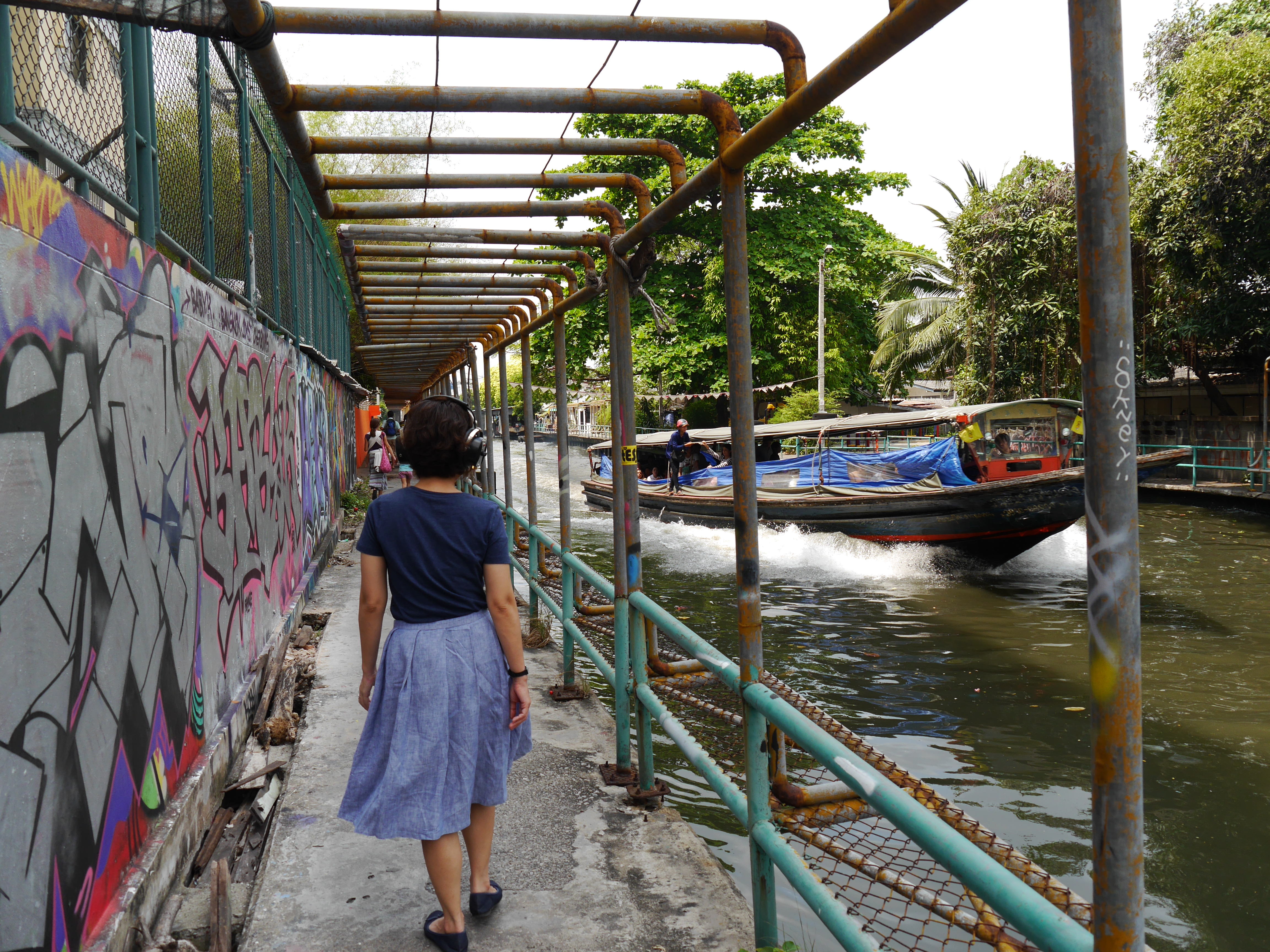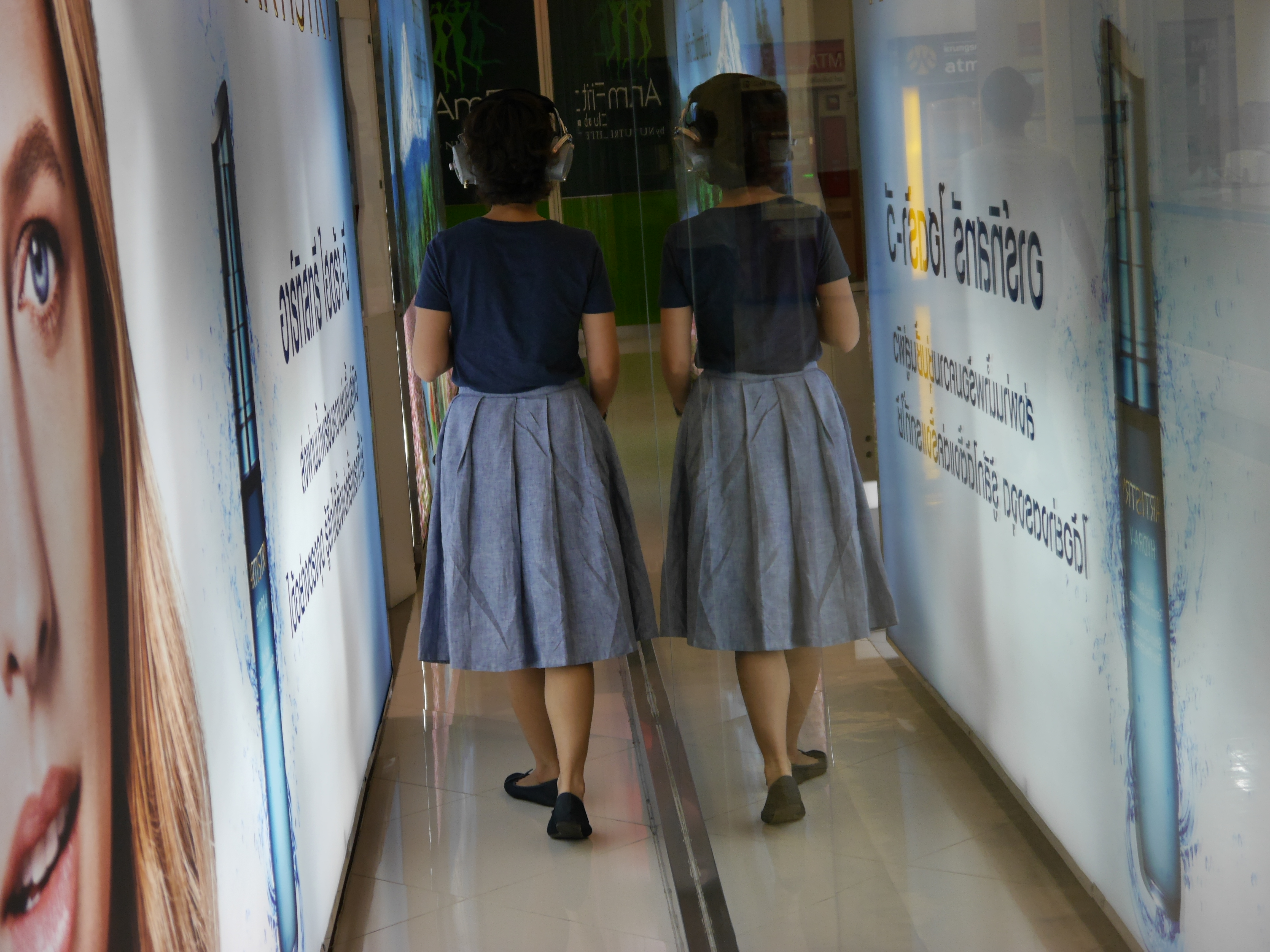ELECTRIC+A-L WALKS BY SOUND ARTIST CHRISTINA KUBISCH GIVE VOICE TO AN INVISIBLE DIMENSION OF THE CITIES WE INHABIT
Electric+a-l walks, an installation by veteran sound artist Christina Kubisch currently being held at and around the Bangkok Art and Culture Centre in conjunction with the ‘Live the City: Urban Media Project’ organized by the Goethe Institute turns invisible qualities of the city audible, allowing for a new dimension of the spaces we inhabit to be observed.

Soundwave visualization of a ventilation system and audio of electrical cables near the Bangkok Art and Culture Centre
Part of an ongoing project Kubisch began back in 2003, The Electrical Walks utilize “specially-built headphones that receive electromagnetic signals from the environment and convert them into sound.” Kubisch maps a given territory, this installment of which begins at the Bangkok Art and Culture Centre and extends out across the skytrain junction, through the Siam shopping center, down along the San Sab canal and through several small alleys leading back to the starting point, allowing for participants to experience the unique electro-magnetic sounds that are Bangkok. “The variety is astonishing,” describes Kubisch, as the “loudness, length, tone and rhythm come in a great variety and are much more musical than one could expect. There are complex layers of high and low frequencies, loops of rhythmic sequences, groups of tiny signals, long drones and many things which change constantly and are hard to describe.”

Walking, and listening along the San Sab Canal
The suggested map takes one past several “hot spots” such as “ATM machines, security systems, electronic cash registers and subway systems where the signals are particularly strong or interesting” and, while the variety and complexity of the audio revealed is surprising, what is further intriguing is the quality and character of the sounds and the manner in which they may, or may not, seem to ‘match’ that which emits them. The large somewhat intrusive LED screen demanding our attention on the skytrain junction sounds for example melodious, if not soothing, while the bright and inviting entrance to a shopping center emits frequencies one would likely be quick to move to silence due to their disturbing and forbidding character. “The perception of everyday reality changes when one listens to the electromagnetic fields,” furthers Kubisch. “What is accustomed appears in a different context. Nothing looks the way it sounds. And nothing sounds the way it looks.”

ELECTRIC+A-L WALK in Siam Center
No city is further quite like any other and, as Kubisch has revealed, “some sounds sound much alike all over the world while others are specific to a city or country and cannot be found anywhere else.” This summer, you too can turn the undetectable detectable and the invisible audible as you venture on your own electric+a-l walk in the company of Bangkok’s electromagnetic waves.


